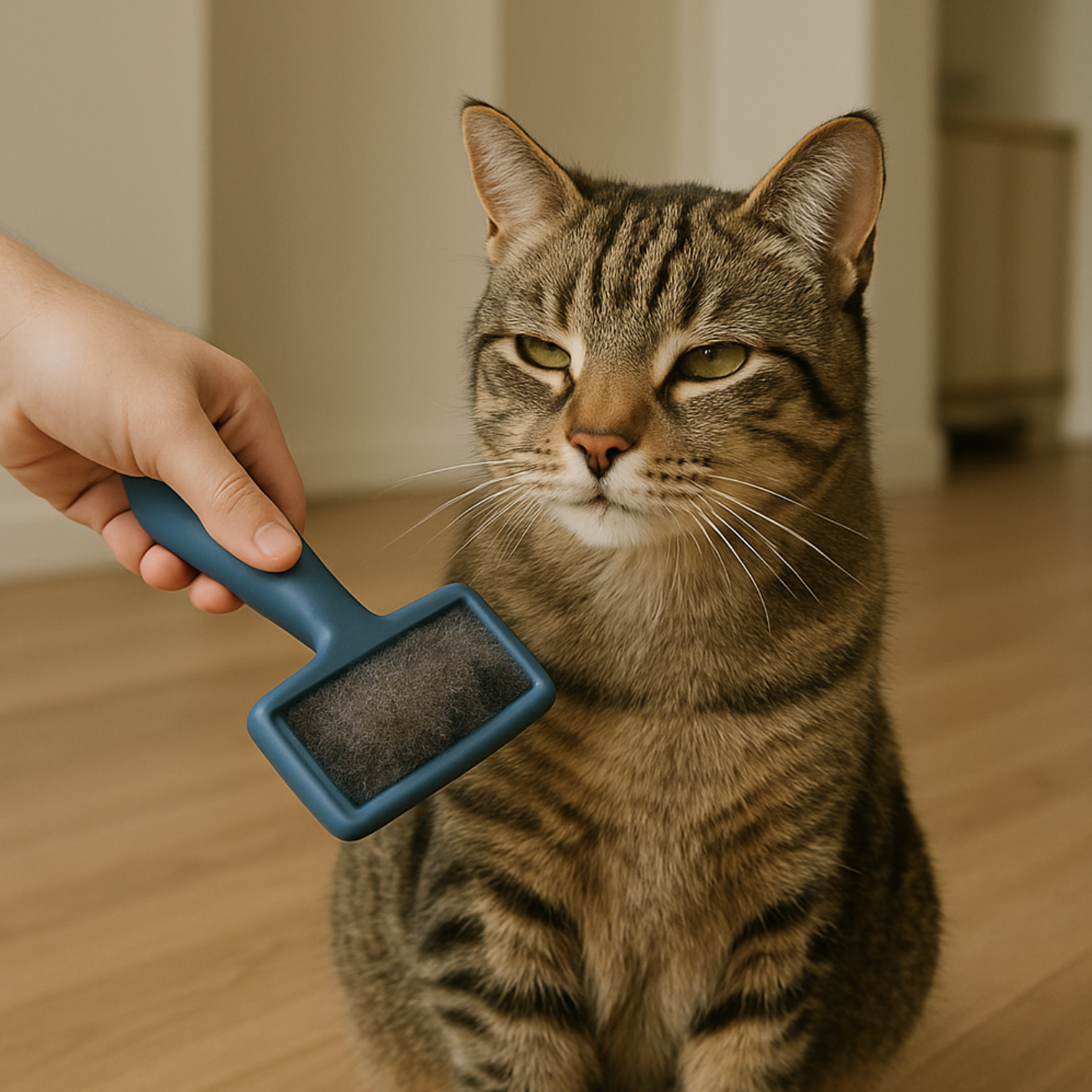- Published on
My Cat Hates Being Brushed! Find Out How to Groom Your Cat Without Any Stress
Brushing your cat is a key part of daily care that helps keep their coat healthy, reduces shedding, and prevents mats 🧶
But what if your cat hates being brushed and reacts with aggression or tries to run away? Discover proven methods to help your furry friend get used to grooming — without stress or struggle ✅
Why Won’t Your Cat Let You Brush Them? Common Reasons 😿
Before trying again, it’s worth understanding why your cat avoids the brush. The most common causes are:
- negative experiences – like painful brushing or sudden, rough movements,
- sensitive skin – some cats don’t tolerate touch in certain areas,
- wrong brush – stiff or sharp bristles can cause discomfort,
- lack of habituation – cats not used to brushing from a young age may see it as a threat.

How to Get Your Cat Used to Brushing? Step by Step
1. Start with short sessions ⏱️
Brush your cat for just a few seconds a day, ideally when they’re relaxed. Gradually increase the time to build positive associations.
2. Pair brushing with rewards 🎁
Use treats, petting, or praise to reinforce good feelings. Brushing can become a pleasant routine for your cat.
3. Choose the right brush for your cat’s coat 🐈
Picking the right brush makes a big difference:
- for short-haired cats – a soft rubber glove or a brush with gentle bristles.
- for long-haired cats – a wide-toothed comb or a brush with soft, flexible bristles.
What if Your Cat Can’t Stand the Brush? Alternative Grooming Methods
1. Remove loose fur by hand 🖐️
If traditional brushes don’t work, try gently stroking your cat with a damp hand or a special grooming glove.
2. Play as a form of grooming 🎾
Playtime boosts circulation and helps shed loose fur naturally. After playing, your cat may be more willing to be brushed.
3. Professional help – cat groomer 🧑🔧
If home methods fail, consider visiting a professional cat groomer. They’ll take care of your cat’s coat without stress or pain.
What to Avoid When Brushing Your Cat 🚫
- don’t force your cat — it will only make things worse,
- don’t shout or punish — brushing should be calm and positive,
- avoid sensitive spots — like the belly or tail, if your cat doesn’t like being touched there.
Why Is Regular Brushing Important? 🐱
Brushing is more than just keeping your cat looking good. It’s also health prevention — it stops mats, helps check skin condition, and reduces how much fur your cat swallows, which can cause digestive issues.
Frequently Asked Questions (FAQ) ❓
Do you need to brush a short-haired cat?
Yes. While short-haired cats require less grooming, brushing once a week helps remove dead fur and reduce shedding.
How often should you brush a long-haired cat?
Daily or at least several times a week. Only regular brushing prevents mats from forming.
What are the best brushes for grooming cats?
It depends on coat length. Good options include:
- grooming gloves,
- rubber brushes for short-haired cats,
- metal combs with rounded tips for long-haired cats.
Summary – How to Get Your Cat to Accept Brushing 🤔
Patience, the right tools, and positive reinforcement are key. Even if your cat hates brushing, you can teach them to tolerate it. Regular grooming is an investment in your pet’s health and comfort — and a cleaner home 🏡